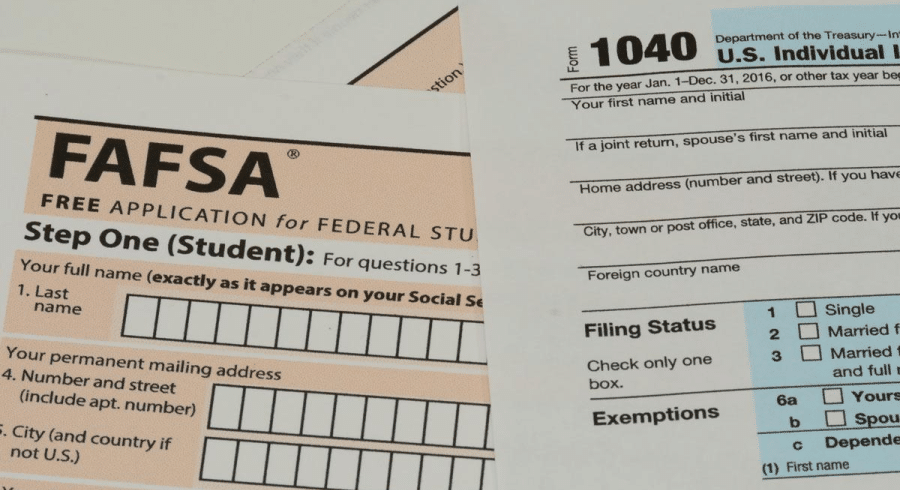
At Archer Investment Management, I’ve spent a number of years working closely with families who seek to send their children to college. In the past few decades, tuition costs have skyrocketed. When the average annual tuition for an in-state public college is $24,610, and $49,320 for a private college, planning far in advance is just as essential as it is for retirement, purchasing a home, and other significant financial goals.
I work with a number of families, many of whom are concerned about the nearly $100,000 price tag that comes with a four-year education. I’ve incorporated various services to help families plan for college. Here are three recent client case studies:
CASE STUDY #1: LONG-TERM COLLEGE SAVINGS
There’s never a bad time to start saving for college, and one couple I worked with started when their child was a newborn. This couple had high-paying careers and the means to save early. The husband Brian was a tech executive at Apple and the wife Betsy was a doctor who owned her own practice. They were concerned about their own graduate school debts and wanted to make sure their child didn’t have a burdensome amount of student loan debt as well. Additionally, the couple’s parents were eager to contribute to the college fund for their new grandchild.
Together, we first projected college costs at various public and private schools, with and without graduate school. This allowed us to set a reasonable range of possible future college expenses they would need to cover. We then incorporated these costs into their comprehensive financial plan to see how they impacted their current lifestyle.
From there, we helped them build a budget to see what they could reasonably afford to save. For Brian and Betsy, it meant we also had to assess the best way for them to pay off their own graduate school debts while still being able to enjoy life and afford necessities. When you have multiple other bills, adding in a new savings goal can be tricky and requires careful planning to balance paying off debt while also maintaining liquidity.
Once we evaluated how much they could save each month for their child’s college tuition, we evaluated appropriate college savings vehicles. We also discussed how they can obtain life insurance at a low cost to protect their child financially and ensure her college is funded should the unexpected happen. Beyond college expenses, since Brian and Betsy were starting their saving early, we discussed the potential for saving tax-efficiently for the primary private school costs they expect once their child is in elementary school.
We also looked at opportunities for the grandparents to help. We encouraged one set of grandparents to make direct contributions to the college fund in lieu of physical presents for the child. For the other grandparents, we suggested accelerated gifting strategies. This was designed to work in their favor as they sought to lower their estate valuation to minimize future estate taxes and to take advantage of potential long-term tax-deferred growth.
By proactively tackling future college expenses, we were able to help this couple seamlessly integrate a new financial goal with their other goals and expenses.
CASE STUDY #2: PREPARING FOR APPROACHING COLLEGE COSTS
Often, parents start seriously considering college expenses when their child enters high school, and this case was no exception. This divorced couple shared a daughter Alexa who was a sophomore at a private high school when they realized it was time for college funding planning. They wanted to make sure to allow enough opportunity to implement their strategies before it became time to apply for financial aid through FAFSA.
This couple had a unique situation. They were divorced and had very different incomes, as the husband Eric was a self-employed artistic consultant while the mother Alana worked for a nonprofit. Our first step was to discuss the rules around determining the custodial parent and how it would affect Alexa’s projected financial aid. We also reviewed how a high-income family such as theirs can reduce their out-of-pocket tuition costs.
Next, we identified all the information the family would need to collect to complete their FAFSA paperwork and calculate their EFC (Expected Family Contribution). They already had an idea of what kind of college Alexa would attend: an Ivy League to study Environmental Science, so we knew we needed to project costs for a private college with high tuition costs.
To do this, we reviewed their total expected cost of attendance at the five top schools they were considering. Next, we identified scholarships Alexa may be eligible to apply for at each of these schools. Through this process, we discovered she may be eligible for several significant merit scholarships if she could raise her GPA by just two-tenths of a point by the time she graduated high school. This gave her two years to work on boosting her GPA.
And although this family already had schools in mind, we helped them review several other schools they hadn’t previously considered that may fit Alexa’s goals better and offer them more financial aid. By reviewing these options, it helped the family potentially avoid the costs of transferring schools, changing majors, needless college visits, or attending a school that wouldn’t provide enough financial aid.
In looking at these new schools alongside their desired Ivy Leagues, we projected the various projected graduation debt levels and offered guidance on where they may qualify for more financial aid.
Beyond addressing savings needs and scholarships, we also evaluated student loans. We identified ongoing loans and tax credits they may be eligible for while Alexa is in school, and then estimated her starting salary at graduation (based on major and desired career) and the time required to pay off student loans.
To provide a more visual illustration, we set up a tool for them to track their ongoing student loan debt and repayment schedule as Alexa progresses through college. The system we use combines all of the loans into one place and helps them stay organized. By having this information, the family can more clearly see their projected loan repayment options and timeline.
This family intends on meeting with us again when Alexa is a senior in high school, as we can help them complete their FAFSA form, navigate financial aid roadblocks, complete and file the major forms on their behalf, and determine the fairness of the offers they receive. With this family, we are establishing an ongoing relationship where we can serve as their go-to guide for answers to their college planning questions.
CASE STUDY #3: TACKLING STUDENT LOAN DEBT AFTER COLLEGE
College planning doesn’t necessarily stop when college starts. Many people don’t realize the importance of college planning ahead of time, or simply were unable to do so. This means many must plan to pay off their college expenses after they graduate.
One client we worked with named Aaron was in this very situation. A recent graduate, he had just accepted a good technology job and it was time for him to start paying off his student loans. Like many graduates, he had a significant student debt load. It can be particularly difficult to make the required payments when you’re new to the workforce and just starting your career.
To start, we used our student loan calculator for Aaron. This tool organizes all of the loan information, calculates the loan repayment options, generates a personalized living expense analysis based on the individual’s income, and helps them start their financial future with greater clarity and knowledge.
We first calculated all eight federal loan repayment options and discovered that consolidating and refinancing his loans with a private lender would save him hundreds of dollars each month and allow him to fully pay off his loans within 10 years.
From there, we built a custom financial plan. The first component of this plan was a budget that factored in his expenses, including his car purchase, rent, travel plans, and loan repayment.
Next, we reviewed the best employer-sponsored benefits he was eligible for at his new job. We showed him how a high deductible health insurance plan for a young person can be a substantial long-term savings opportunity. We also looked at his 401(k) options, and found enough low-cost investment options in his plan to build an appropriate portfolio for his long-term retirement savings.
Lastly, we integrated this comprehensive plan online through a program that digitally links all of his student loans, bank accounts, and bills so he can track everything in one place. Aaron loves using the app on his phone so he can track his progress while on the go. In the end, he has greater confidence and visibility into his financial future and how to tackle his bills while embarking on his new tech career.
HELPING YOU
I work with a broad range of clients facing unique needs and circumstances. Whatever the situation, I strive to address them through a proactive process that focuses on understanding your personal situation, addressing your concerns, and creating strategies that help you work toward your goals.
If you’re experiencing a situation similar to one of these case studies or face an entirely different need, I encourage you to reach out to me. I can evaluate your situation and share how I can help. You can easily book an appointment with me online here. I look forward to speaking with you.
About Richard
Richard Archer is a financial advisor and the President of Archer Investment Management with more than eighteen years of industry experience. Largely working with successful individuals and couples, he specializes in providing comprehensive investment guidance and personalized care and attention to each client. Along with holding a Bachelor of Science in Economics and an MBA, he is a CERTIFIED FINANCIAL PLANNER™ and CFA® charterholder. He combines his advanced industry education and knowledge with his genuine care for people to provide clients with an exceptional experience. To learn more about Richard, connect with him on LinkedIn or visit www.archerim.com.




